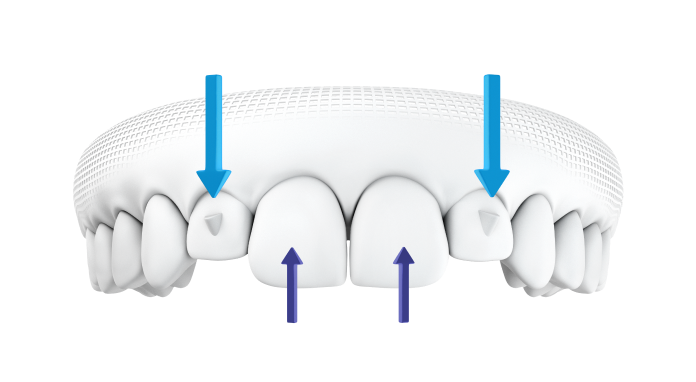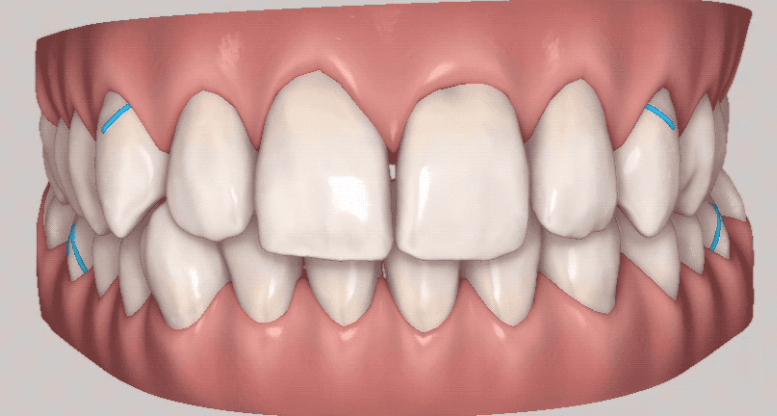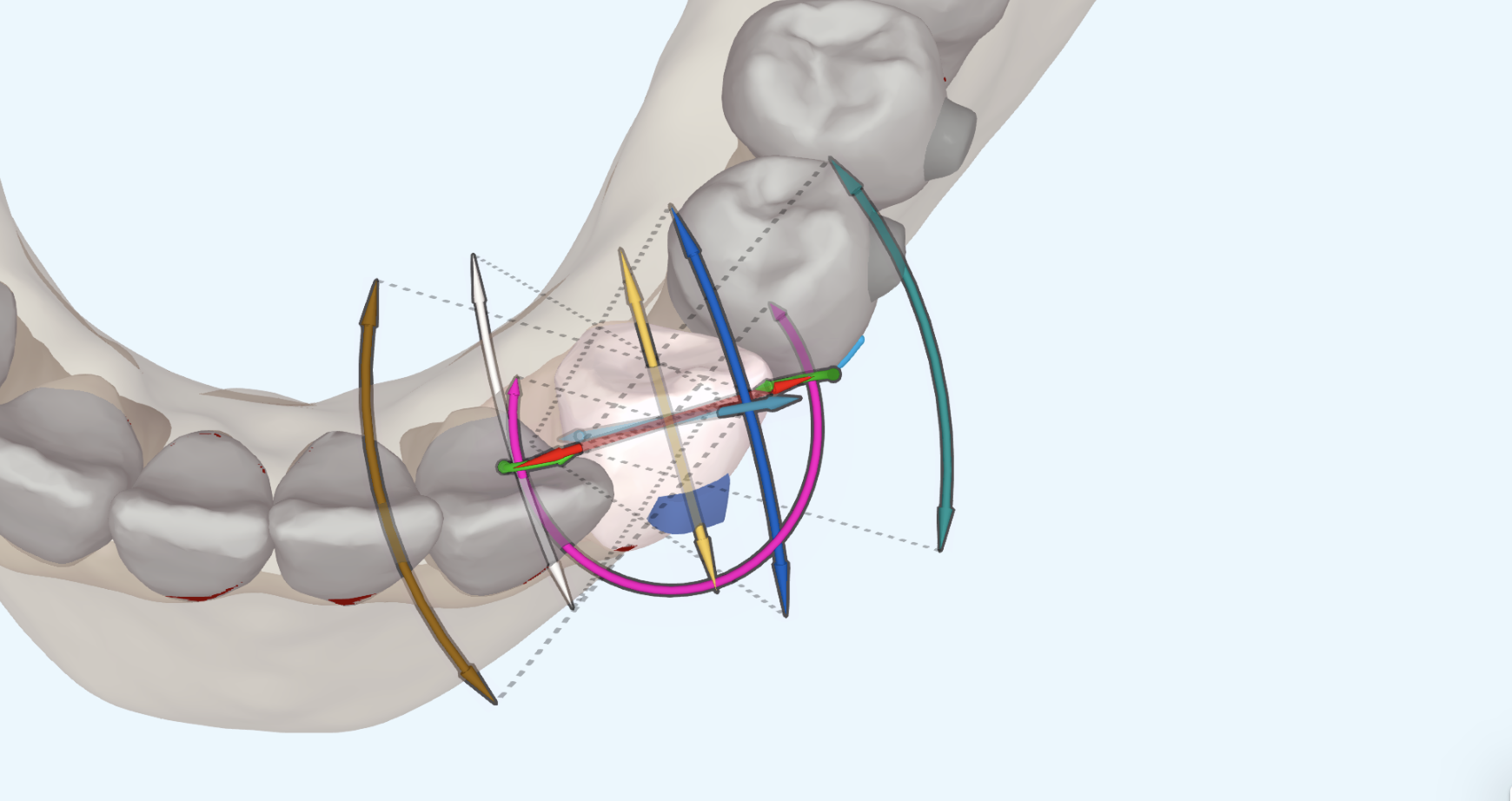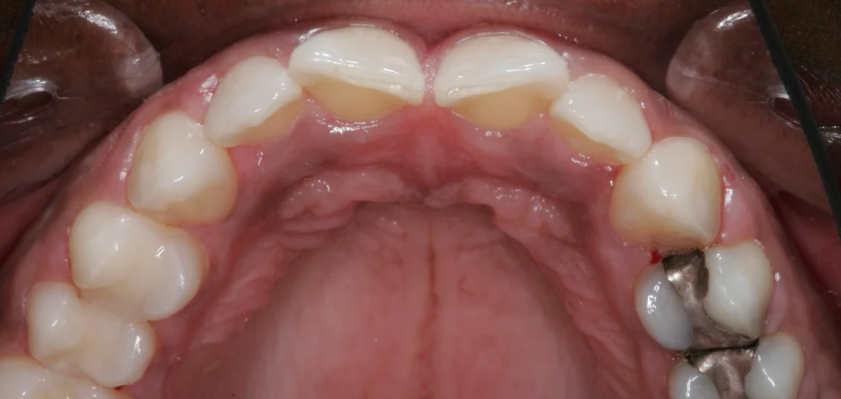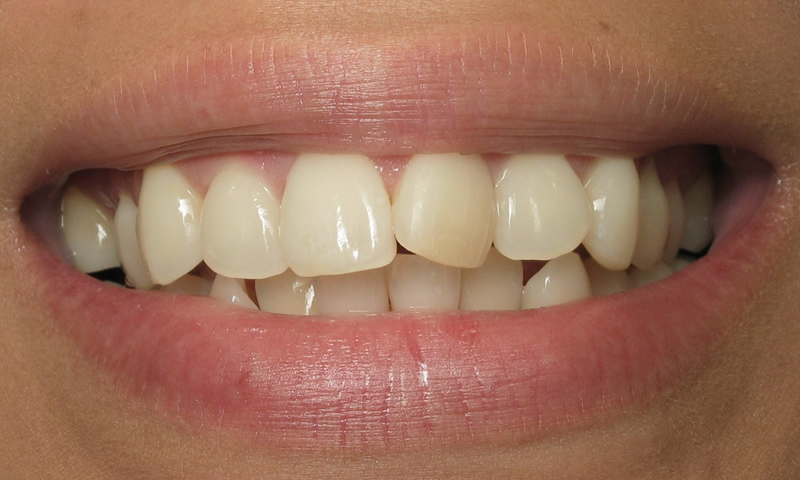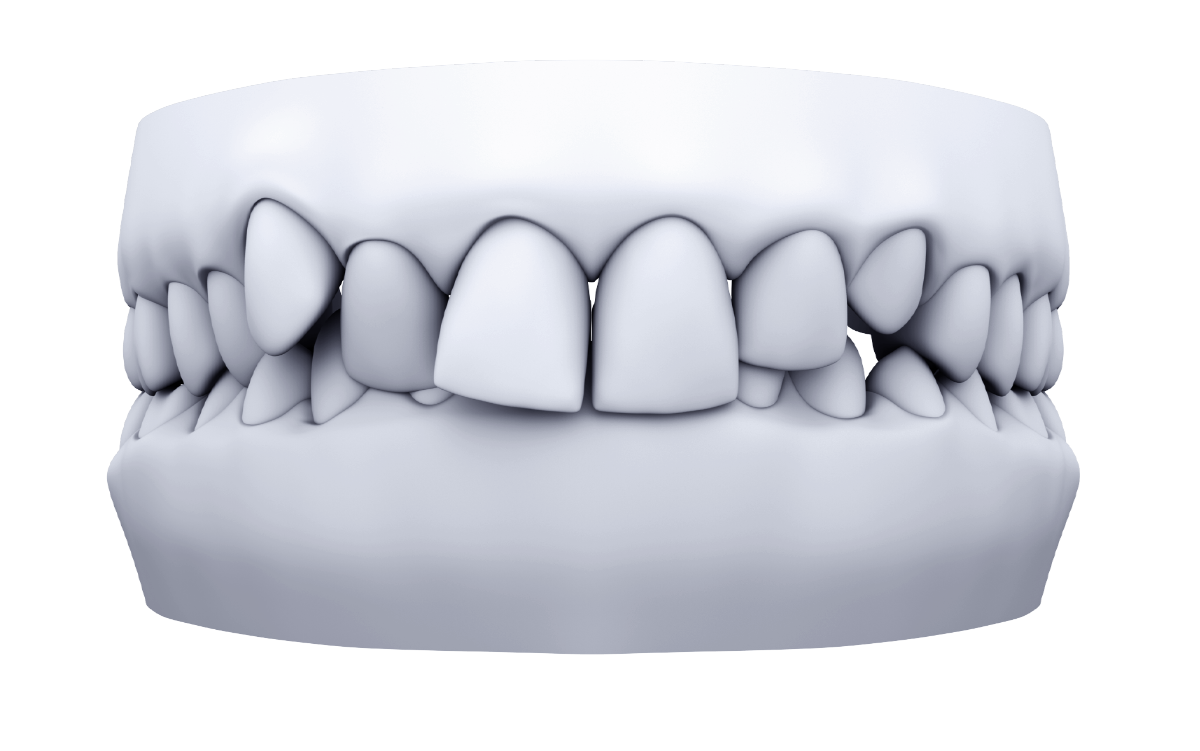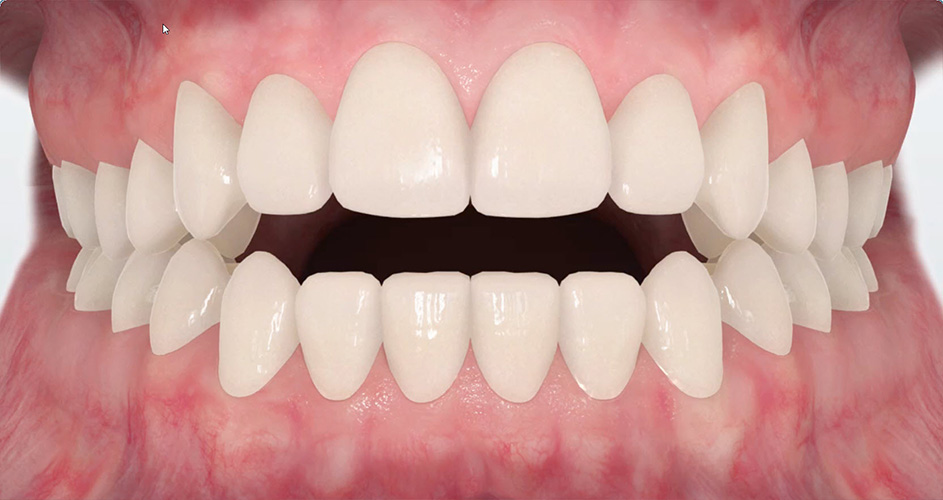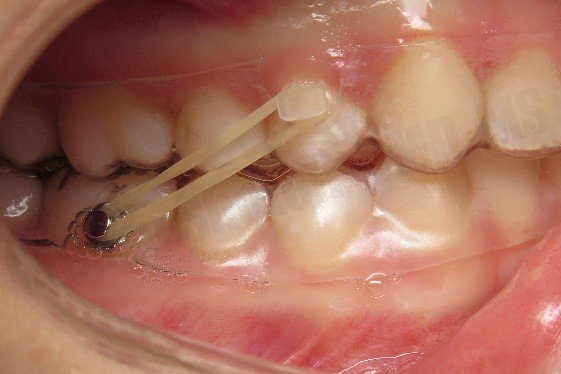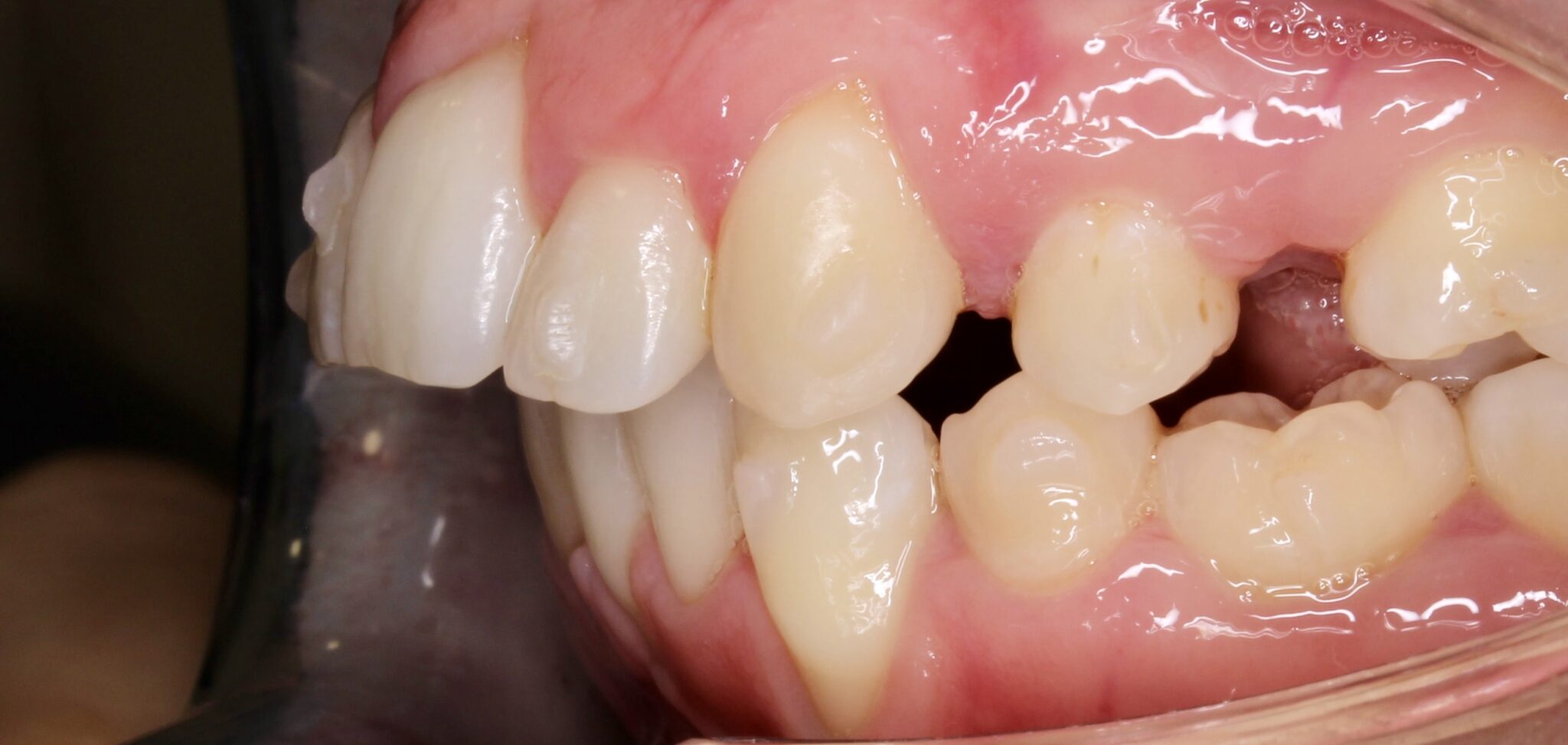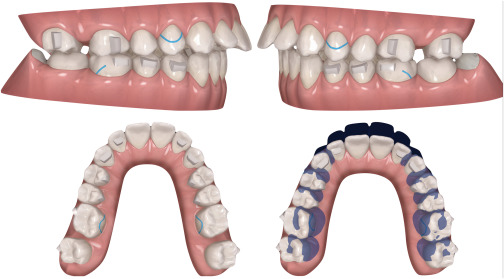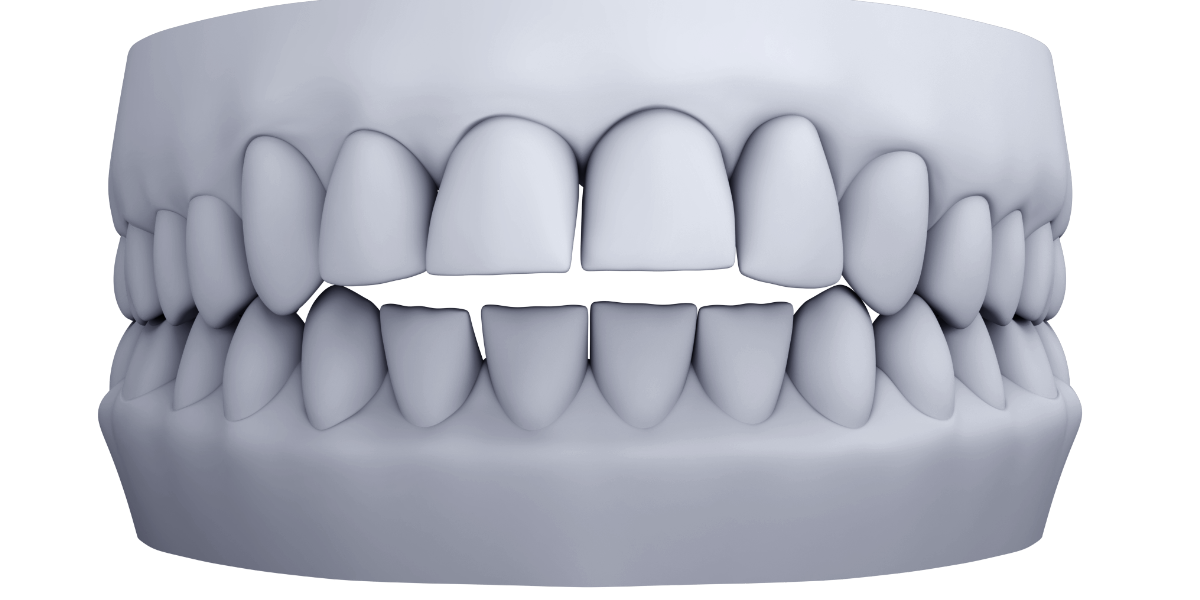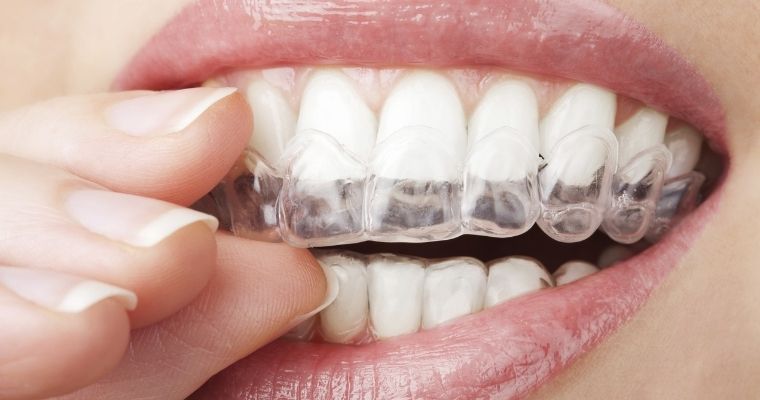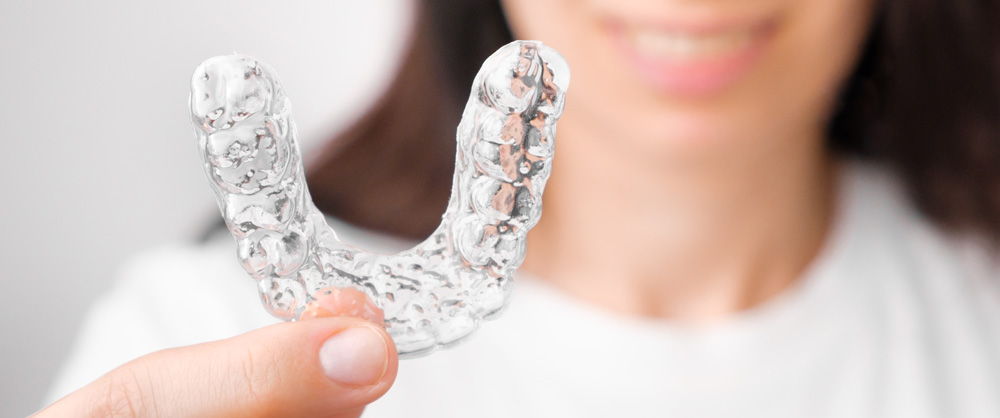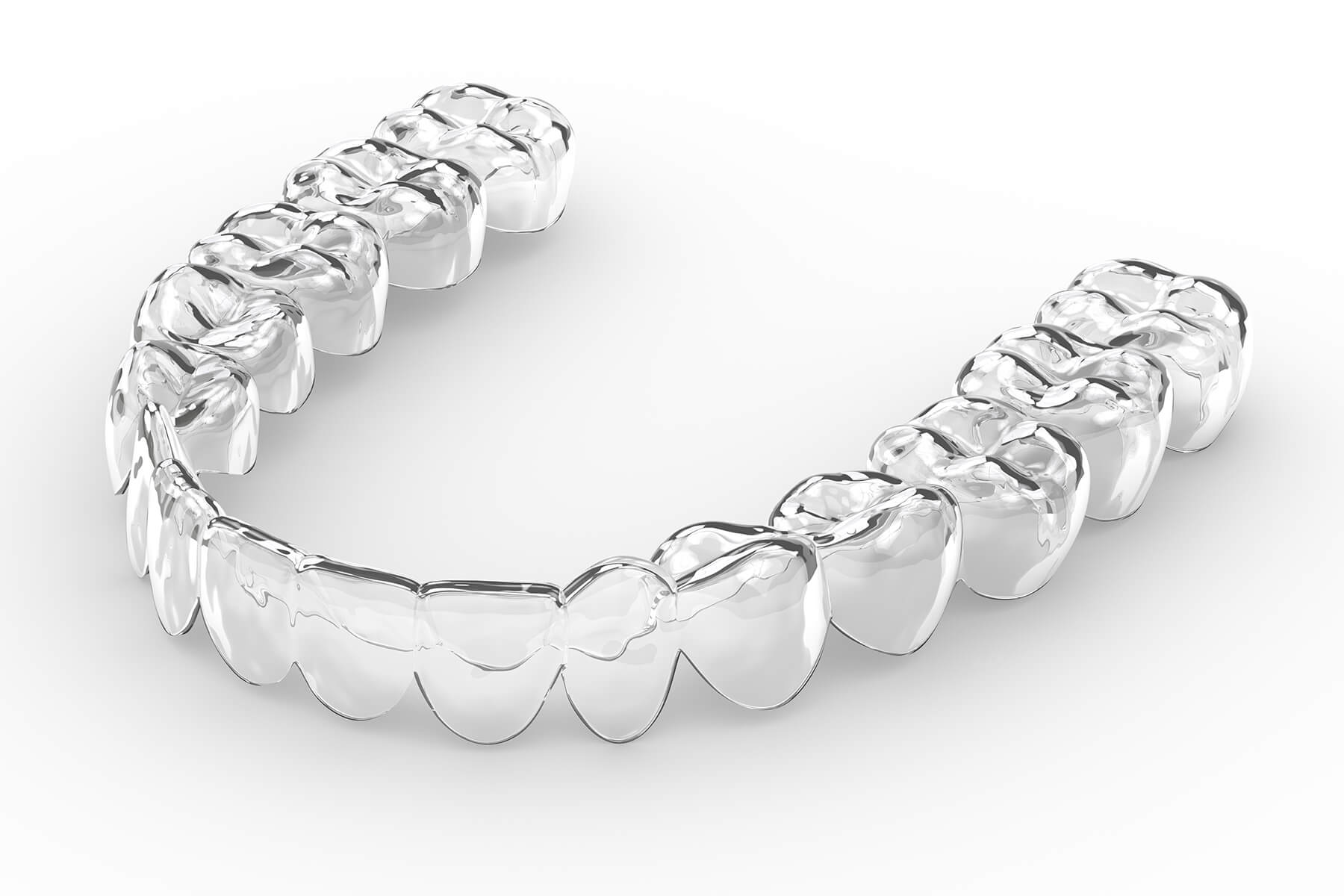Case prescription. Protocols.
by
simona
Uncategorized
Ptient reference/limits
- Midline position
- Incisor display/smile arch
- Posterior torque/basal bone
- Incisor inclination
| OUTCOMES | STRATEGY |
| Class II Correction | “Plan 2.5 mm sequential distalization of 50% pattern on the upper arch. |
| Crossbite correction | Make 1 mm of upper expansion by buccal crown inclination without exceeding 0-degree torque. Solve the rest of the transverse problem by lower compression. |
| Deep bite correction | Do not intrude upper incisors and canines. Finish with 0 mm overbite by intrusion of lower anterior teeth. |
| Crowding correction | Expansion of 2 mm per side in both arches using the distal side of 41 (initial position) as the lower teeth proclination limit. |
| Crowding2 | Align lower teeth using the initial position of 31 as the limit of lower proclination. Make necessary IPR from mesial 34 to mesial 44 to meet this objective. |
| Midline deviation | Perform mid-anchorage sequential distalization of the 1st quadrant to displace upper midline 2 mm to the right |
| Thin biotype/recessions | During expansion movements avoid buccal movements of the roots of premolars, canines and incisors |
| Anterior leveling | Use gingival margins as a reference to align the anterior teeth of the upper arch: canines and incisors at the same height and laterals 1 mm below them |
Case prescription. Sample.
Outcome. Align upper incisors and canines.
Strategy:

- 1 mm of mid-anchorage sequential distalization of upper premolars and molars.
- IPR 0.3 between of all upper incisors
- Avoid round-tripping movements of upper incisors and canines
- Do not extrude and ligualize upper 13 until space is created for its alignment.
GENERIC INSTRUCTIONS
- Number of active aligners. “Same number of active aligners in both arches. The movement rate of the arch where there are fewer movements will be reduced. “
- Movements coordination. “Coordinate both arches movements, so that the overlapping between upper and lower teeth is minimised as far as possible in the posterior region and no contacts between the anterior upper and lower teeth occur during their alignment. (p.s. in crossbite cases, overlapping or “ghost effect” will be unavoidable.
- Round-tripping movements:
- a)Make round-tripping movements to align anterior teeth. Start correcting rotations during initial proclination with mesial/distal out movements (hinge rotations) as needed.
- b)or avoid round-tripping movements on anterior teeth. IPR should be performed as soon as possible to achieve this goal even if the access to the interproximal point is not optimal.
- Bolton discrepancy. Solve the Bolton discrepancy by IPR in the anterior region (from canine to canine) in the excess of tooth material.
- a) Solve Bolton discrepancy by IPR in the anterior region (from canine to canine) in the excess of tooth material
- b)open spaces on mesial and distal of upper lateral incisors to resolve the Bolton discrepancy

